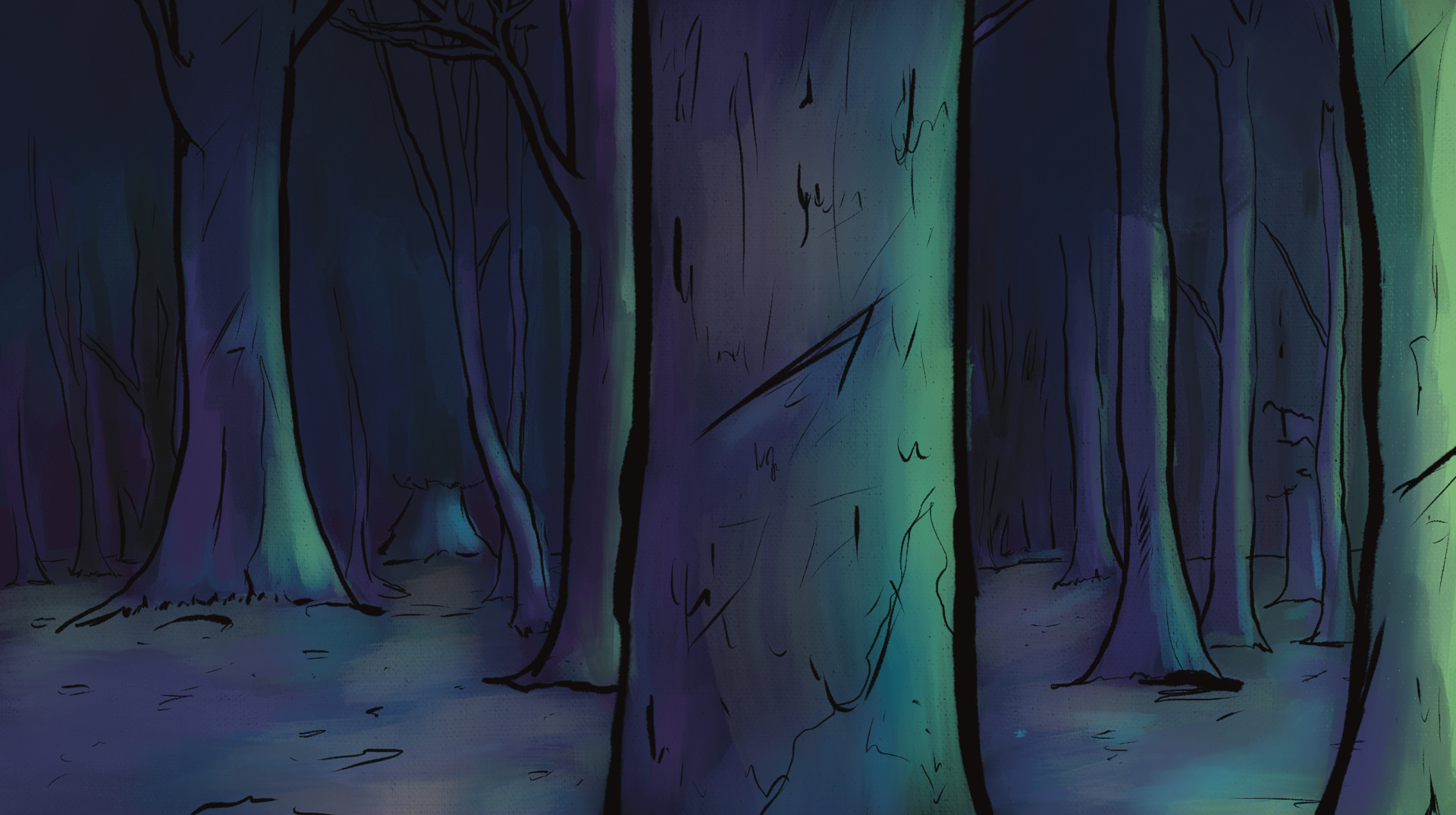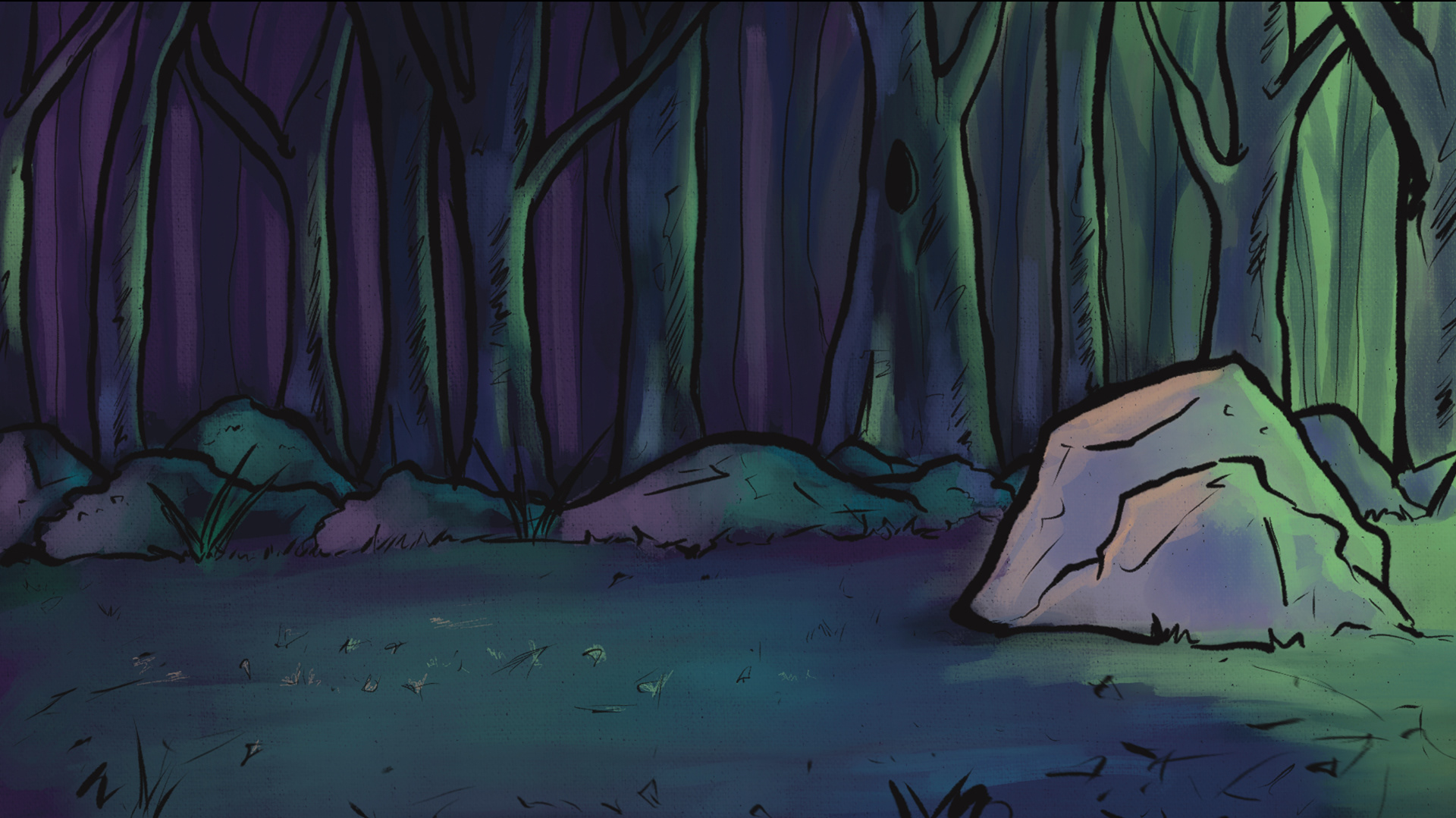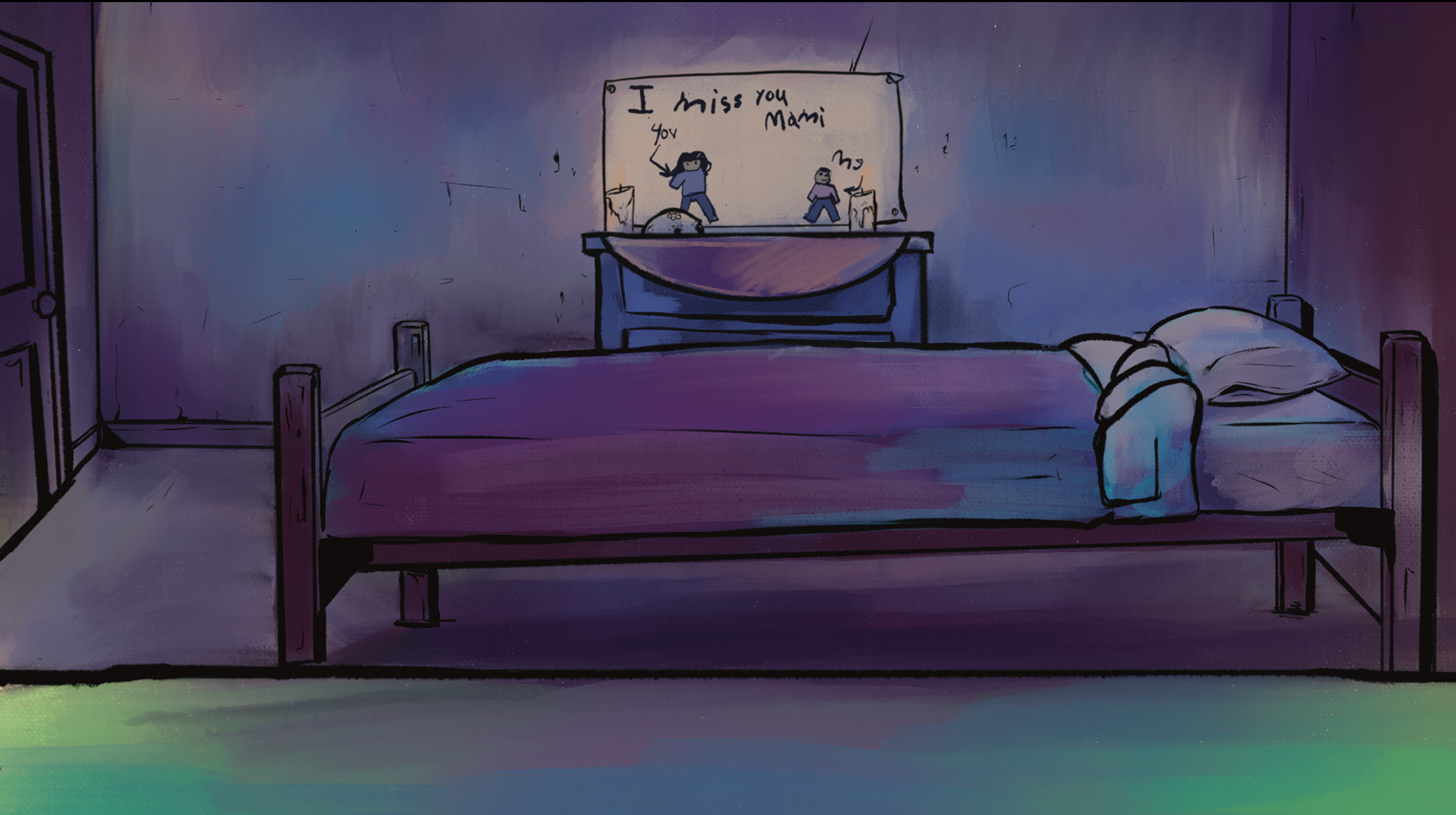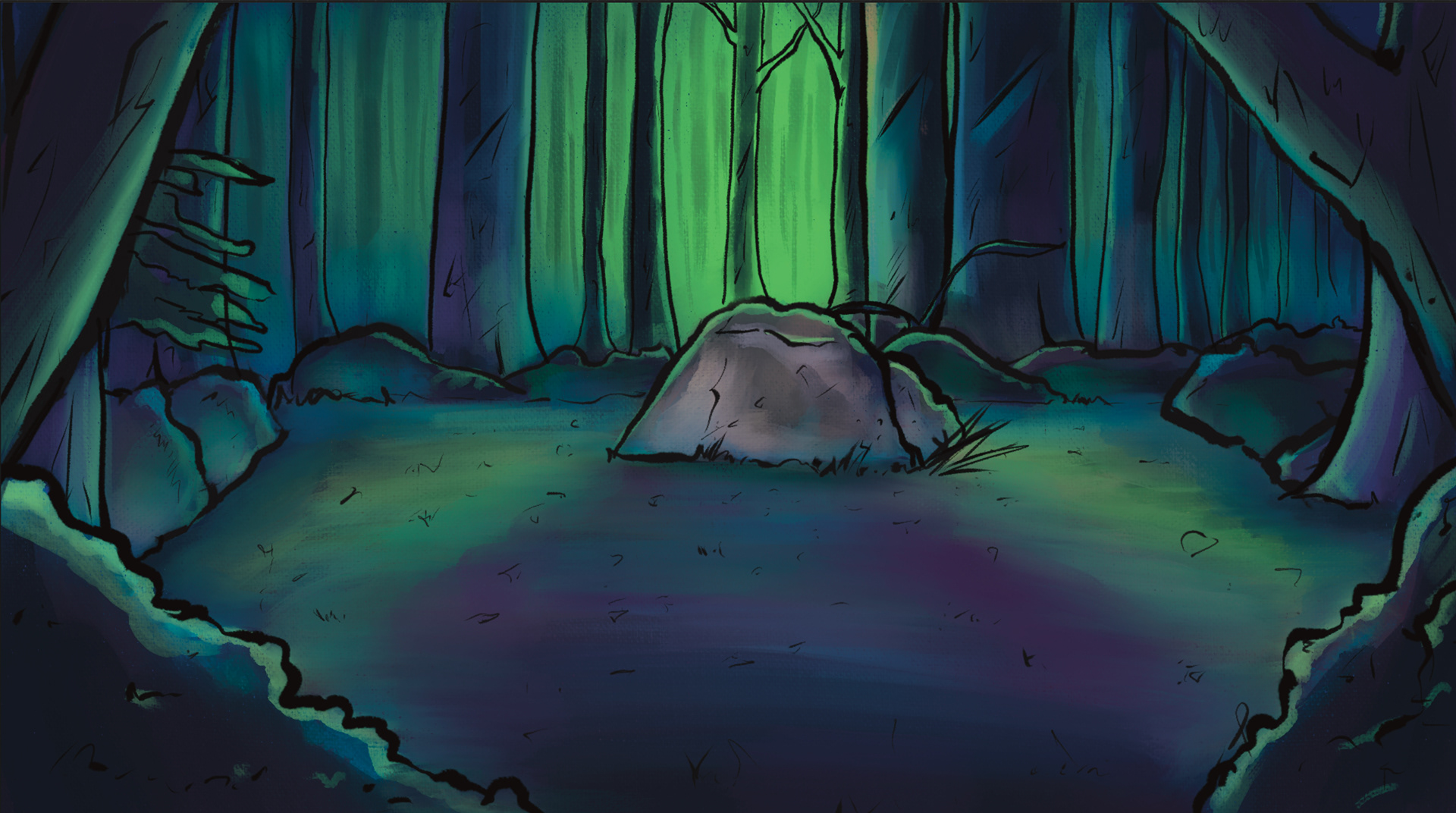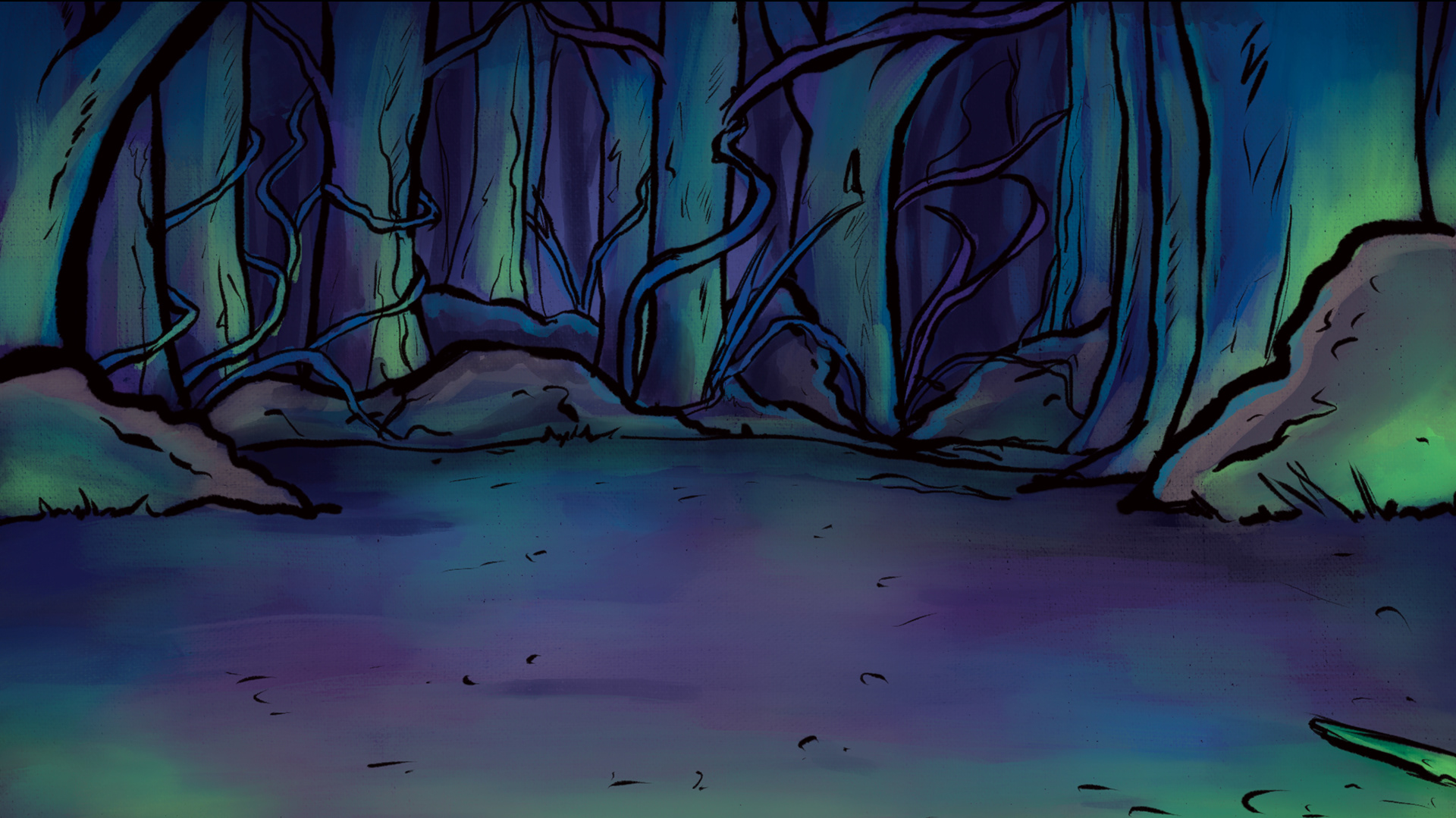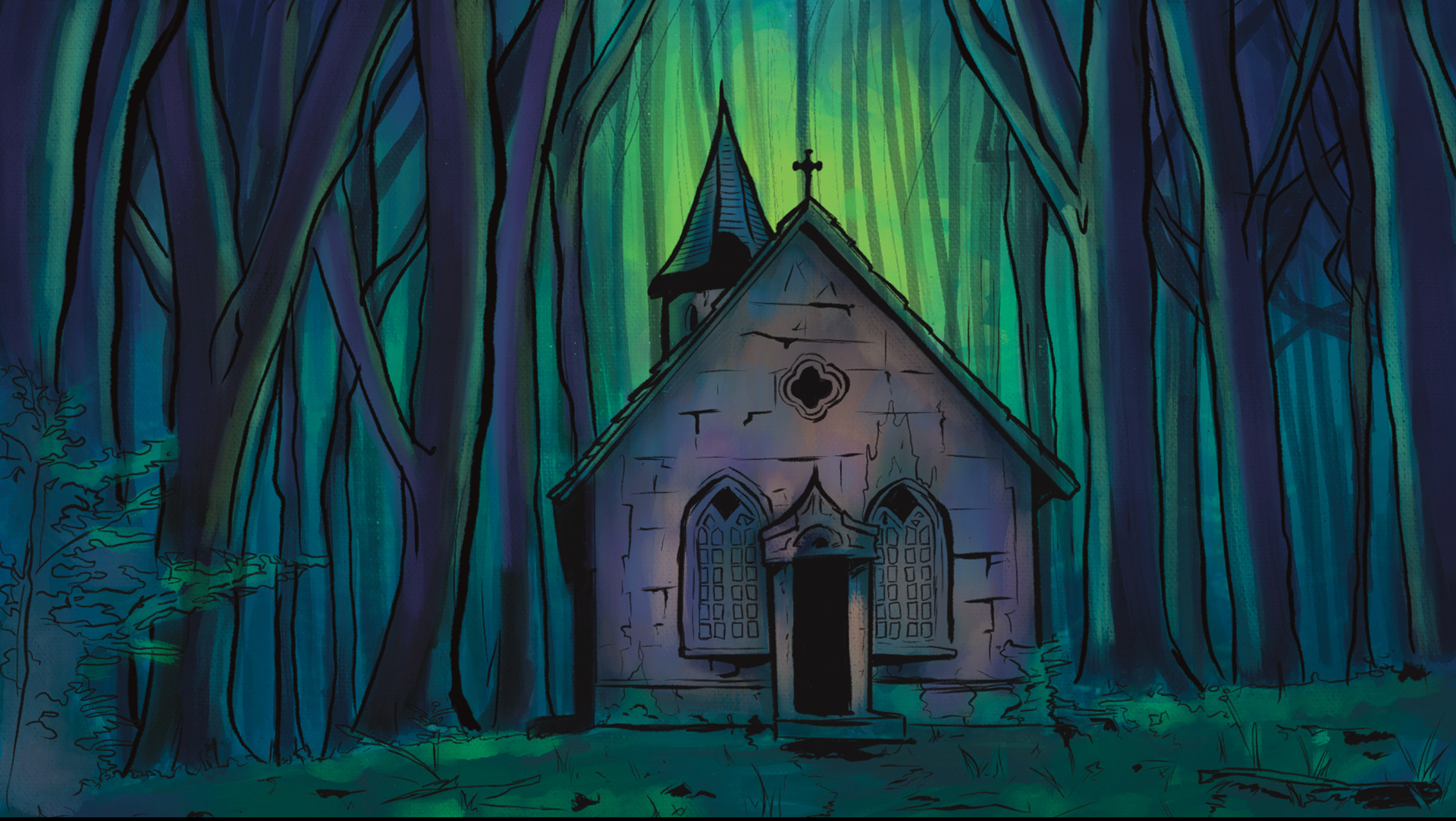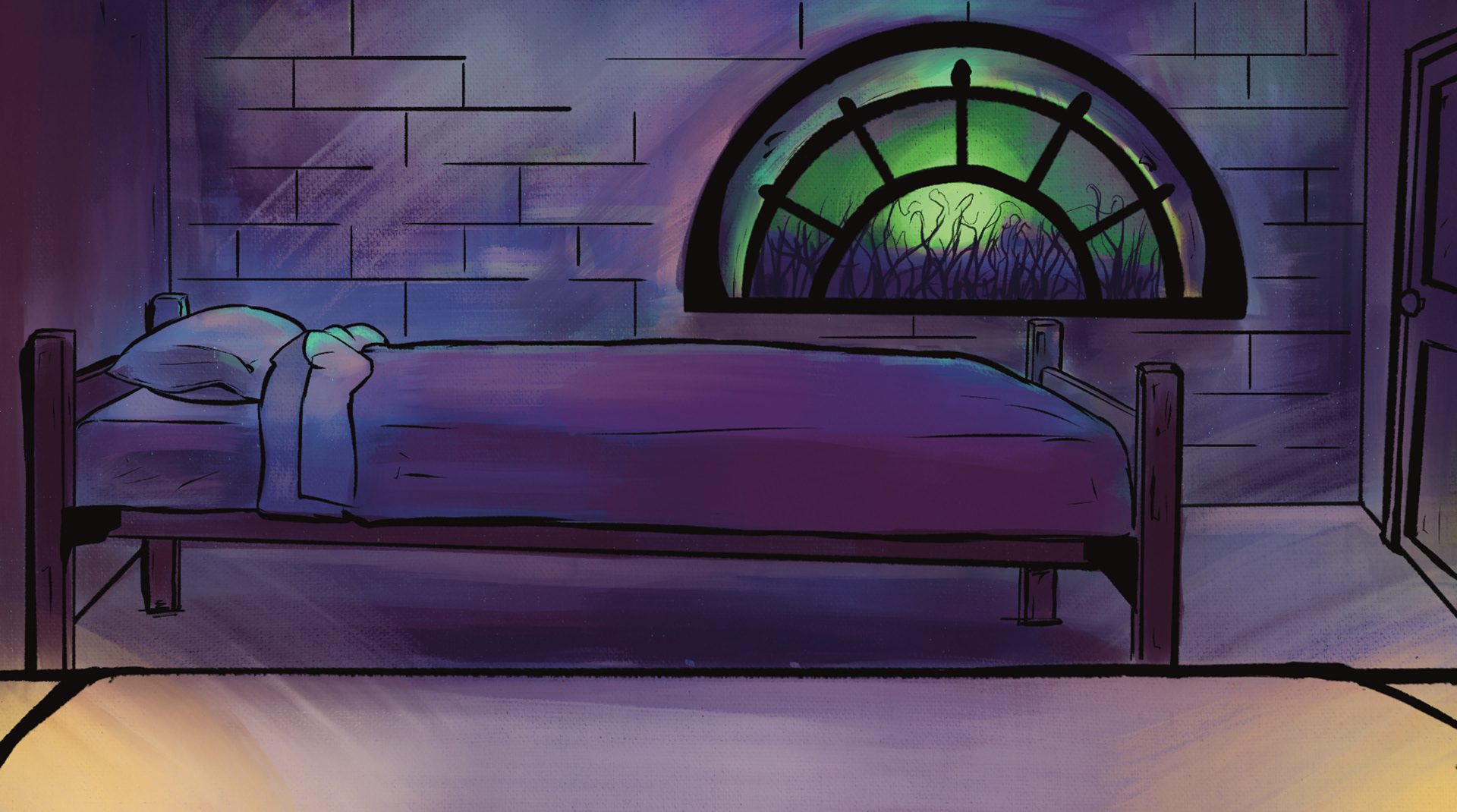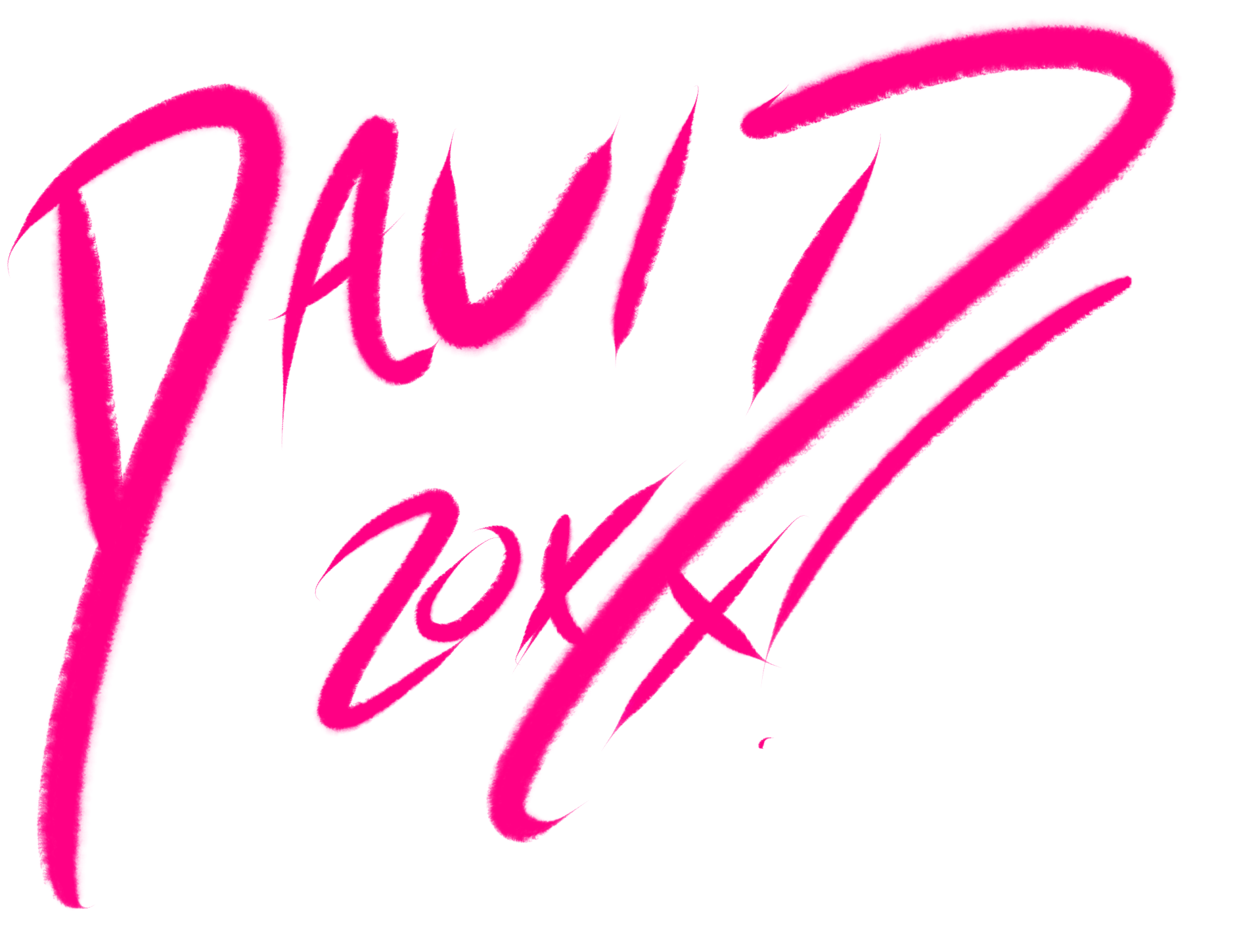Artist Statement
La Lechuza is based on a Mexican folklore tale told by my mother as a child. Intended as a cautionary tale to keep children in check, the legend tells about a witch who transforms into a giant owl. She was a woman who was said to have once been a mother, but after her child was killed, she kidnapped other children who misbehaved. My mother warned that if I heard the faint coos of an owl at night, it was La Lechuza trying to lure me away so she would take me away. While the thought of an owl woman kidnapping me was terrifying, she was also a fascinating character to me. Inspired by my sense of loss through the sudden deaths of my father and brother at a young age, I saw firsthand how grief can mold someone into a person they can't recognize anymore. I want to interrogate grief's effect on people and how it connects to our choices and the people we become.
Within the context of my animated short, La Lechuza was once a loving mother who upwardly fought in a world that devalues women. However, one day, she was accused of practicing witchcraft by the townspeople and was sentenced to death by fire. In the chaos, her child is also caught in the turmoil, resulting in his tragic death. Overwhelmed by grief, La Lechuza reaches her breaking point. She believes the world and its people are the real monsters. Thus, she makes a deal with the Devil and becomes the very witch they accused her of. Centuries later, a boy is going through a loss of his own—the death of his mother. He is lonely yet still hopeful. He longs for the family he lost and often tries to recreate it everywhere he can. While La Lechuza is someone who has given up hope for life, the Boy holds it in his heart.
La Lechuza is about the confrontation between two people in different states of grief. The short's namesake character is portrayed as a complicated figure. She is informed by her grief - consumed by it - and she is someone who has grieved alone for centuries. On the other hand, the Boy is still processing his grief. He is not sure how to handle it and, like La Lechuza, is facing grief alone. The two lead characters are reflective of one another. The Boy is the reflection of the child La Lechuza has lost, and La Lechuza is who the Boy can become if he lets his grief consume him.
This project is an ode to the Disney and Fleischer films of my childhood, both in art direction and tone. The backgrounds are digitally painted with heavy inspiration from the painting style of Disney's Sleeping Beauty and Bambi, and they have an added graphic quality that you would see in comic books. The characters are designed with expressive animated features in mind, taking advantage of the medium to show the complex emotions they will face throughout the short.
The animated short is hand-drawn in 2D, fifteen frames per second, and five minutes long. It is paced by a musical component (harkening back to the Disney Renaissance era of animation and folk songs I heard as a child). The dialogue throughout the piece will take the form of the characters singing the folk song La Llorona, mimicking the complex, grieving La Lechuza and her loss.
La Lechuza explores the complexity of grief through the lens of its two main characters. It shows how grief can isolate and unite people by providing contrasting ways for the characters to handle their losses. Additionally, it suggests that we may transform into someone we don't recognize if grief is left unaddressed. It demonstrates that while grief can be isolating and painful, the familiar connections you make with other people keep love alive.
Character Model Sheets
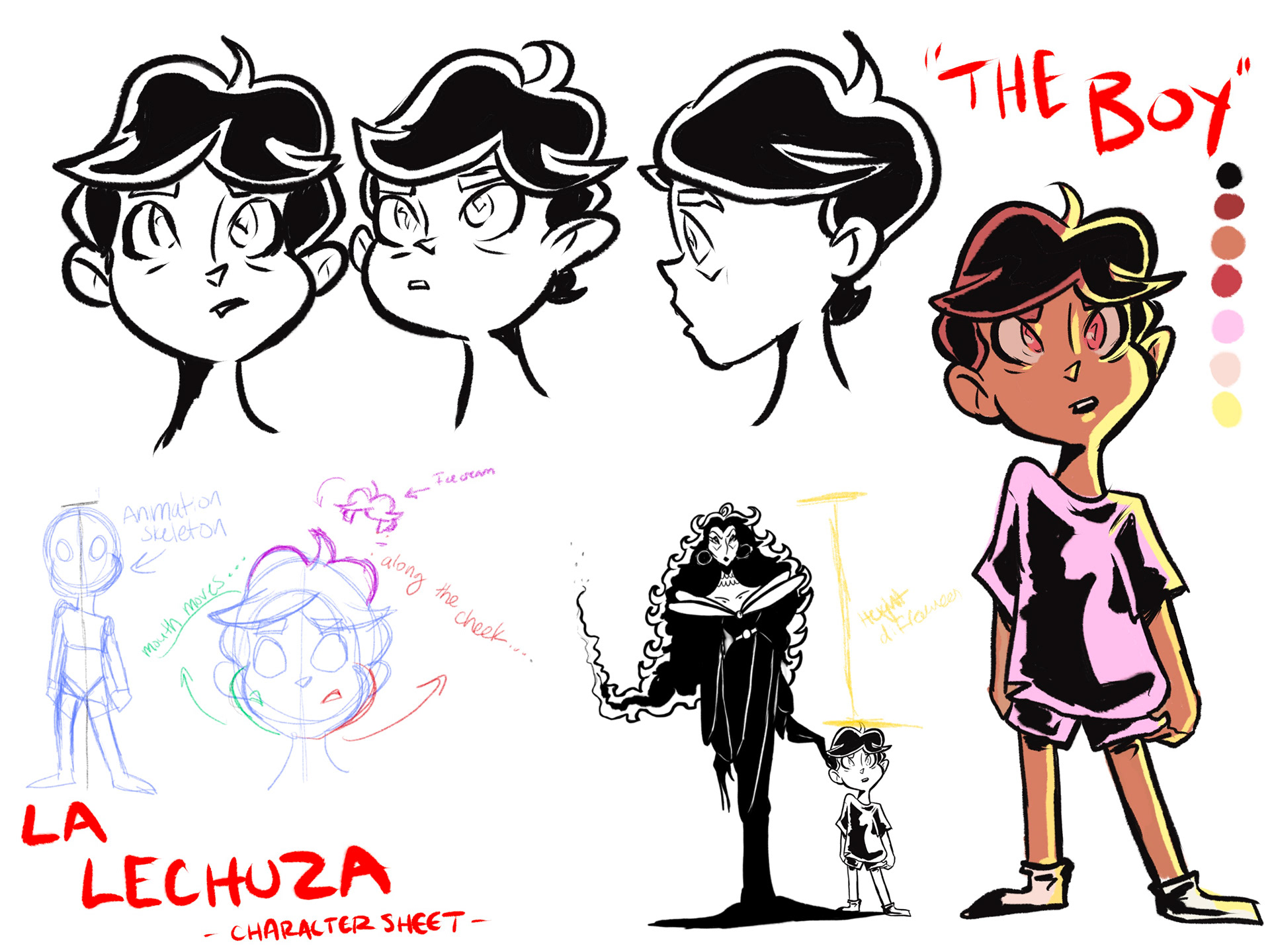
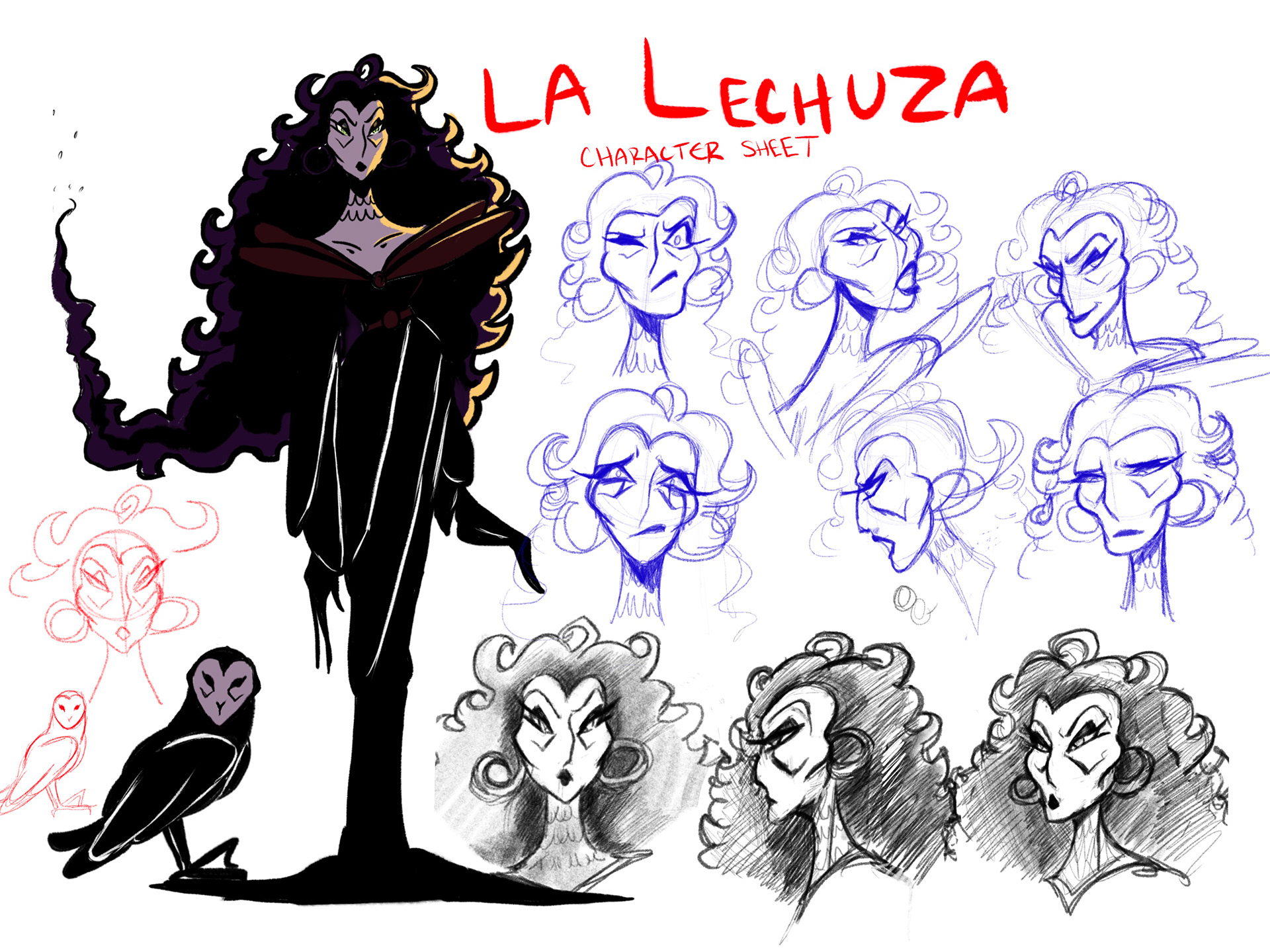
Backgrounds

